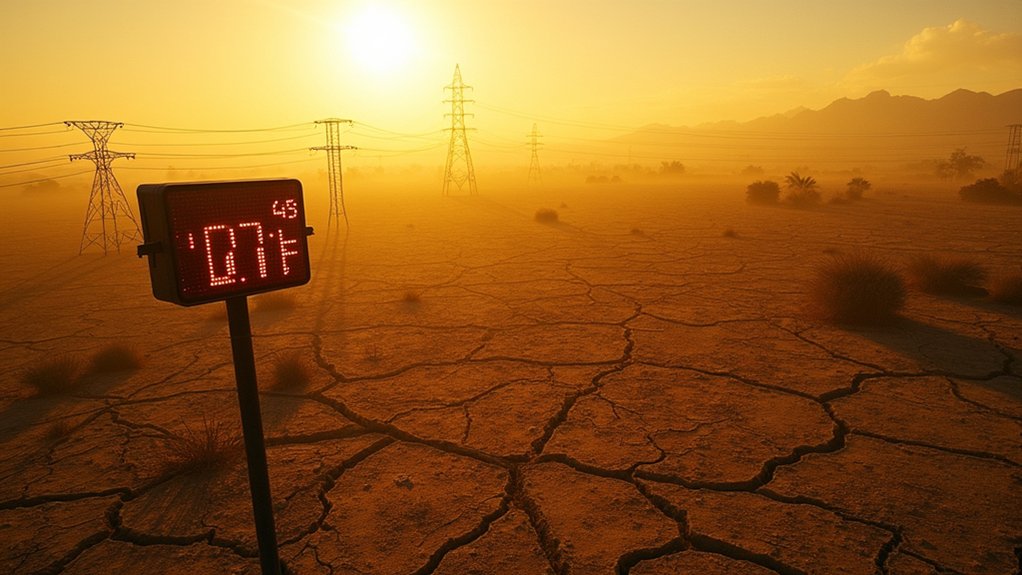As temperatures rise across Spain, the country’s famous wine industry is facing its biggest threat in centuries. Climate change is forcing producers to think about leaving vineyards their families have worked for generations.
The problem hits hardest in southern Spain and along the Mediterranean coast. These areas are getting too hot and don’t have enough water for growing grapes. If temperatures keep rising, these historic wine regions might become impossible to farm. The central plateau faces similar dangers.
Southern Spain’s historic wine regions face extinction as temperatures soar and water disappears.
Northern Spain tells a different story. Warmer weather there means vintners can grow different types of grapes. They’re making wines with more alcohol and sugar but less acid. While this sounds good, it’s not. The grapes produce lower-quality wines that sell for less money.
The numbers show how bad things have gotten. In 2024, Spain made 37 million hectoliters of wine. That’s 7% less than expected. Some regions lost half their grapes in 2022. Last year, farmers had to pick grapes in July instead of waiting until late August or September like they used to. In Catalonia’s Penedès region, some vineyards suffered 70% crop loss from the severe drought conditions.
Water has become a huge problem. Spain’s dealing with record droughts. Wine regions need more water for irrigation, but there’s less available. Farmers, cities, and businesses all fight over the shrinking supply. In central and southern Spain, vineyards can’t survive without extra water. These water shortages align with predictions that climate change will cause approximately 250,000 additional deaths annually worldwide between 2030 and 2050.
Some winemakers are trying new solutions. They’re planting grape varieties that ripen later in the season. Others are changing the roots of their vines to handle heat better. Many look to higher ground in the mountains where it’s cooler. Areas near the Pyrenees that were once too cold now work for growing grapes. In Mediterranean vineyards, erosion rates can represent significant income loss for producers.
Despite these challenges, Spanish wine consumption grew by 1.3% through July 2024. People bought 9.76 million units of wine.
But the industry’s future remains uncertain. Premium wine regions that made Spain famous are at risk. Without major changes, the country’s wine map will look very different in coming decades.
References
- https://libres.uncg.edu/ir/asu/f/Hewitt-Castillo
- https://apps.fas.usda.gov/newgainapi/api/Report/DownloadReportByFileName?fileName=Spain+Wine+Sector+Outlook+2024_Madrid_Spain_SP2024-0023.pdf
- https://www.climatechangepost.com/countries/spain/viniculture/
- https://www.winespectator.com/articles/spanish-winemakers-confront-record-drought-conditions
- https://wine-intelligence.com/blogs/wine-news-insights-wine-intelligence-trends-data-reports/spanish-wine-sector-in-2024-a-year-of-challenges-and-opportunities








